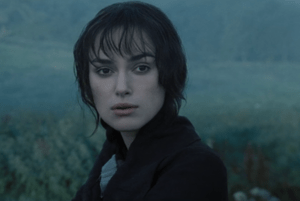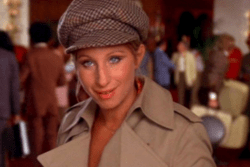Elizabeth Bennet, Feminist Killjoy
I became a full-blooded Janeite when I read Emma as a twelve year old, shortly followed by Austen’s classic, Pride and Prejudice, a few months later. I was captivated by a world of lavish parties, grand estates, and husband-material men who make five thousand a year. Reading Austen was truly an experience that brought me back into the folds of time. It prompted my love for classic British literature at a young age. While the constraints of Austen’s world may seem dismal, I became captivated with a character who cared for none of it. This was Lizzie, and she became my pre-teen self’s inspiration.
Shortly after I finished P&P, I watched the 2005 movie version where Keira Knightley artfully breathes life into the protagonist Elizabeth Bennet. Stuck in ankle-length dresses and societal norms, Lizzie is a fish out of water in Georgian England. Despite the difference of over two hundred years, her strong-willed personality during a time when women weren’t expected to speak their minds at all makes her a beloved figure to young women today.
For those unfamiliar, Pride and Prejudice is the story of the five Bennet sisters, whose overbearing mother is desperate to marry them off in order to extend the family’s limited wealth. The town is thrown into a frenzy when rich, handsome Mr. Bingley purchases a nearby estate. Bingley’s radiance is dampened only by his friend, Mr. Darcy, who is perceived by all to be moody and pessimistic. When the brooding Darcy clashes with lively Elizabeth, sparks—and some well-thrown insults—fly.
Lizzie’s charm and appeal as a character comes from her background. She is not rich nor does she have traditional status, but she is confident, well-spoken, and determined; her personality mirrors a modern woman today, making her character both likable and relatable. The men in the story have a strict idea of what a perfect woman should look like, and that mold isn’t meant to be broken. Lizzie, unlike some of her companions, isn’t afraid to call these men out when they’re being sexist. For example, when Darcy lists what an “accomplished” woman should look like, she interrupts him and says. “I never saw such a woman. She would certainly be a fearsome thing to behold.” In this scene, Lizzie is what today’s slang labels as a “killjoy,” or someone who spoils the mood by pointing out elephants in the room. She is able to recognize the ridiculousness of Darcy’s requirements, and while many women of the time would hold their tongue, Lizzie demands respect from the men in her life.
Lizzie doesn’t just speak out against stereotypes, she actively defies them. Even though she receives a marriage proposal from a rich “dreaded cousin,” she turns him down. While unmarried women over the age of twenty are normal in our society, in Lizzie’s time they were practically spinsters. Despite this, Lizzie rejects her cousin instead of committing to a lavish life rooted in a loveless marriage.
Some may say that these arguments are invalid because Pride and Prejudice is, at its core, a love story. Lizzie does marry at the end of the book, to the aforementioned Mr. Darcy--a joyous union of probably two of the most argumentative, self-empowered characters in literary history. It was incredibly uncommon for a marriage of this era to be a marriage of equals. The driving forces behind matrimony were usually money and status, and, once the wedding ceremony was complete, the new wife would often become a sort of trophy or household fixture. A relationship where the wife feels her husband respects her opinions as well as her beauty, in the way that Darcy respects Elizabeth, was a near anomaly.
Pride and Prejudice may lack modernity in its publication date. However, the struggle of how a woman fits into her home weighs upon many females’ minds today. Modern relationships are still laden with pressure from the society around us, especially surrounding a woman’s personality and independence. Lizzie, with her fiery tendencies and quick wit, shows young girls how to assert themselves even when those around her conceived her to be capable of very little. It is unusual that a character from a traditional, antiquarian novel would serve as a role model two hundred years later, but that is what Lizzie does. Her self-knowledge, compassion, and confidence make Elizabeth an Austen girl who isn't to be trifled with.
This piece was written as part of JWA’s Rising Voices Fellowship.







